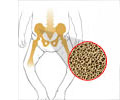After analyzing 40 brands of beer, a team of researchers from the University of Valladolid (Spain) has discovered that dark beer has more free iron than pale and non-alcoholic beers.

"Although these quantities are very small, the differences are apparent and could be due to the production processes or raw materials used in manufacturing," stated Carlos Blanco, professor of Food Technology at UVa and co-author of the study.
The study, published in the Journal of the Science of Food and Agriculture, indicates that higher iron content in dark beer could be explained by the malt and hop extracts used to produce it.
However, pale beer production includes a filtering stage in which diatomaceous earth is used. This sedimentary rock is a porous material with micro-algae used to lighten the beer; it traps the iron, causing its concentrations to decrease.
Non-alcoholic beer undergoes vacuum evaporation processes to remove the alcohol. This operation also removes iron ions given that they are dragged by the volatile molecules.
The study examined 17 Spanish beer brands and 23 from other countries, with 28 pale, 6 dark and 6 non-alcoholic beers. The beers with the highest iron content were a dark Spanish beer (165 ppb) and a dark Mexican beer (130 ppb). Those that had the lowest levels of iron were from The Netherlands and Ireland (41 ppb and 47 ppb, respectively).
Advertisement
Researchers have validated the technique they developed to analyse iron (differential pulse adsorptive stripping voltammetry technique), which is "an ultra-sensitive, selective, rapid, reliable and cost-effective method". The team has also recently applied an 'electronic tongue' for the first time to quantify the degree of bitterness and alcohol in beer.
Advertisement
Source-Eurekalert











